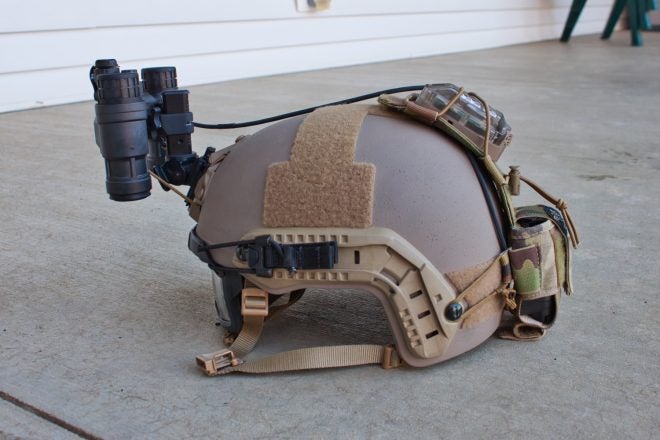Helmets today are quickly becoming the latest accessory billboards, especially when used for night vision applications. The trend for the top helmet companies is to try to provide the lightest possible helmet. However, many users continually counteract this trend and seem to be adding as much gear as they can possibly attach. Some of the gear is important and relevant. Even with strictly the essentials, if not mounted and organized well it can cause issues. Wires ran outside of the helmet can easily get snagged. Many accessories attached only to the velcro can also be lost. Snagging is extremely easy in confined spaces. When wearing a helmet the user must also accommodate for the added height. The Tactical Night Vision Company (TNVC) Mohawk series was developed by Chip Lasky to organize and secure necessary gear to the helmet.
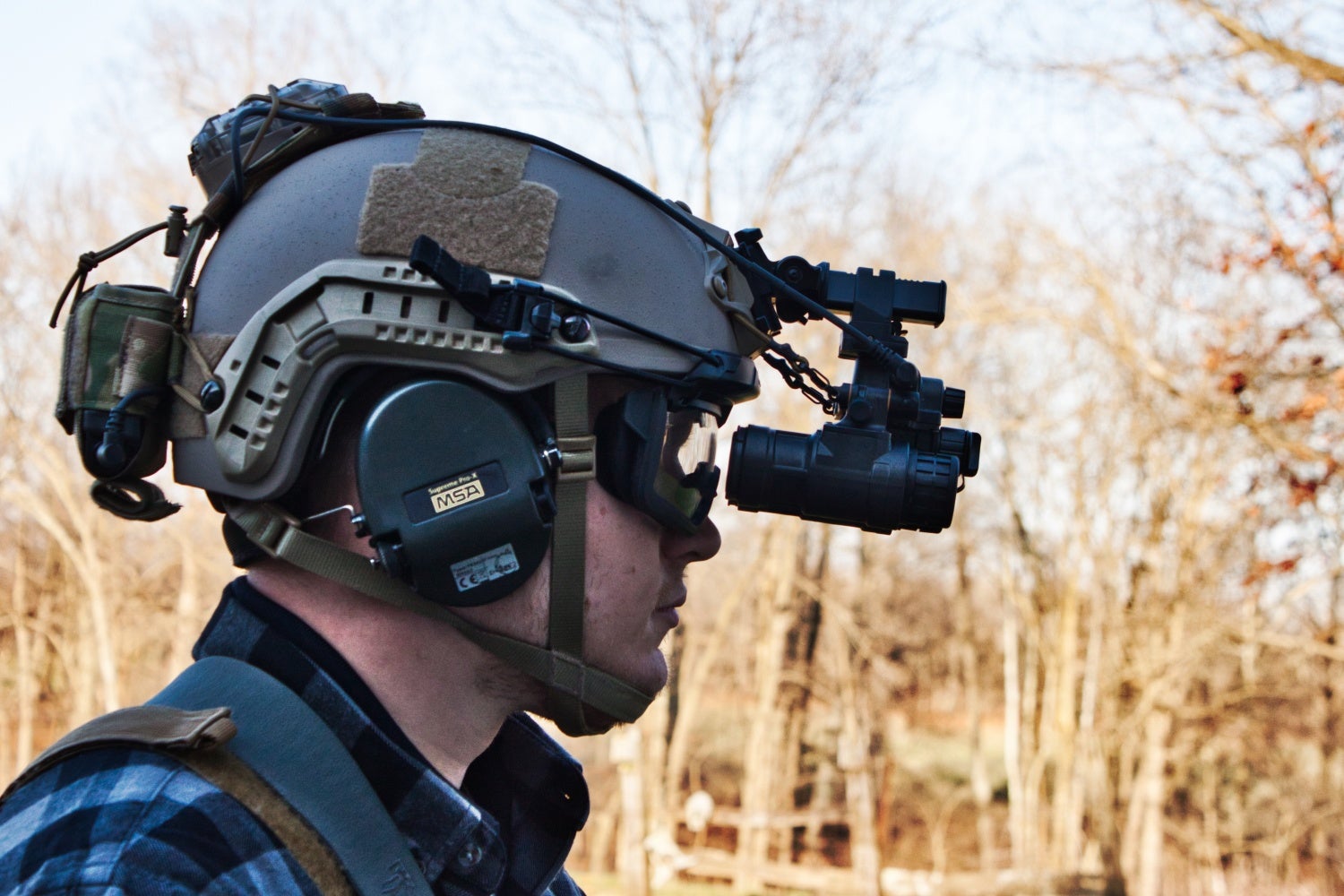
The PVS-31a is very light compared to other dual tube NVG’s, but the Mohawk with a battery pack still help provide a more comfortable center of gravity for extended use.
The Mohawk line comes in a Mk1, Mk2, and Mk3 designation, each designed with subtle differences depending on the user’s night vision setup. The Mohawk works as a helmet counterweight and accessory management system. With dual tube units the weight on the front of the helmet from the night vision often pushes the helmet forward due to the added weight in front. The counterweight in the rear of the helmet helps equal out the weight and reduces neck strain. What differentiates the Mohawk variants is the counterweight pocket at the base of the Mohawk. The Mk1 has a removable insert for batteries or counterweights to be stored.
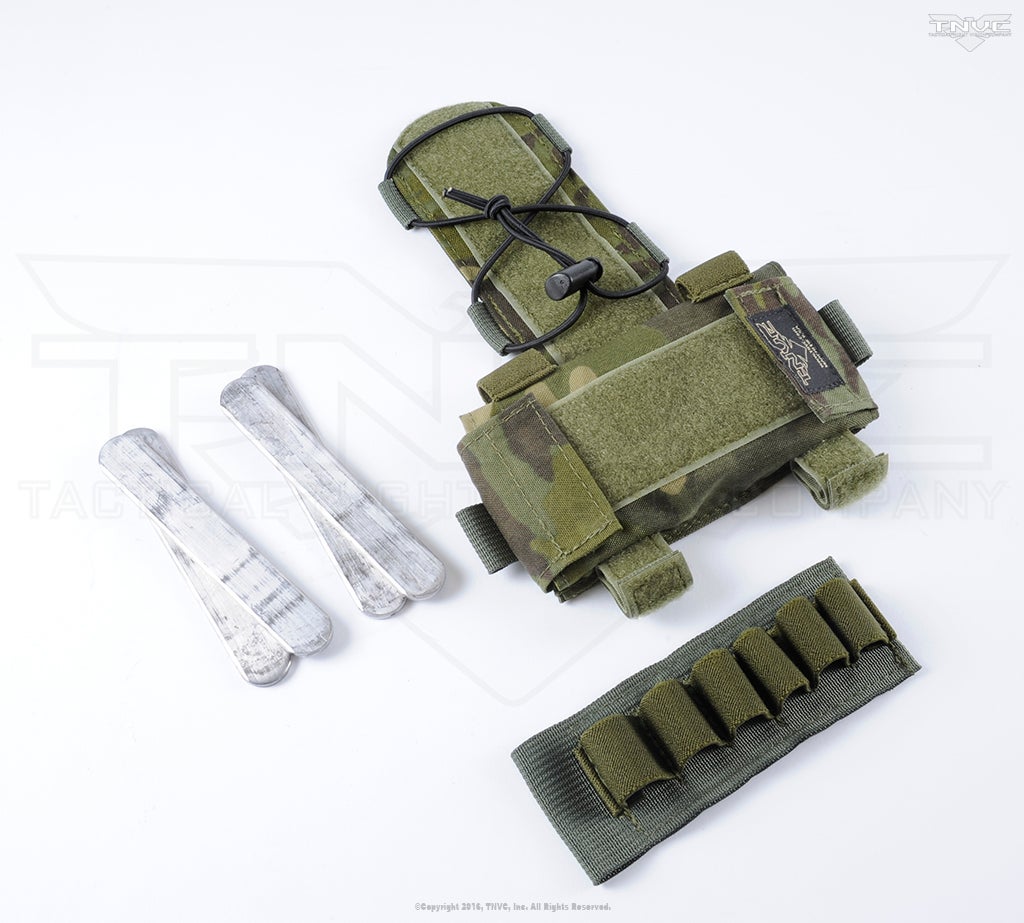
Here we see the 4 included counterweights as well as the battery holder insert that can be retrieved from either side of the Mohawk.
Source: https://tnvc.com/shop/tnvc-mohawk-mk1-counterweight/
The Mk2 is built to fit battery packs for Sentinels, ANVIS9, AVS-6, AN/PVS-23, AN/PVS-31, and GPNVG-18. Some often purchase the Mk2 and utilize other counterweights such as a loaded 10 round magazine if they do not utilize a battery pack but still want the counterweight and storage space.
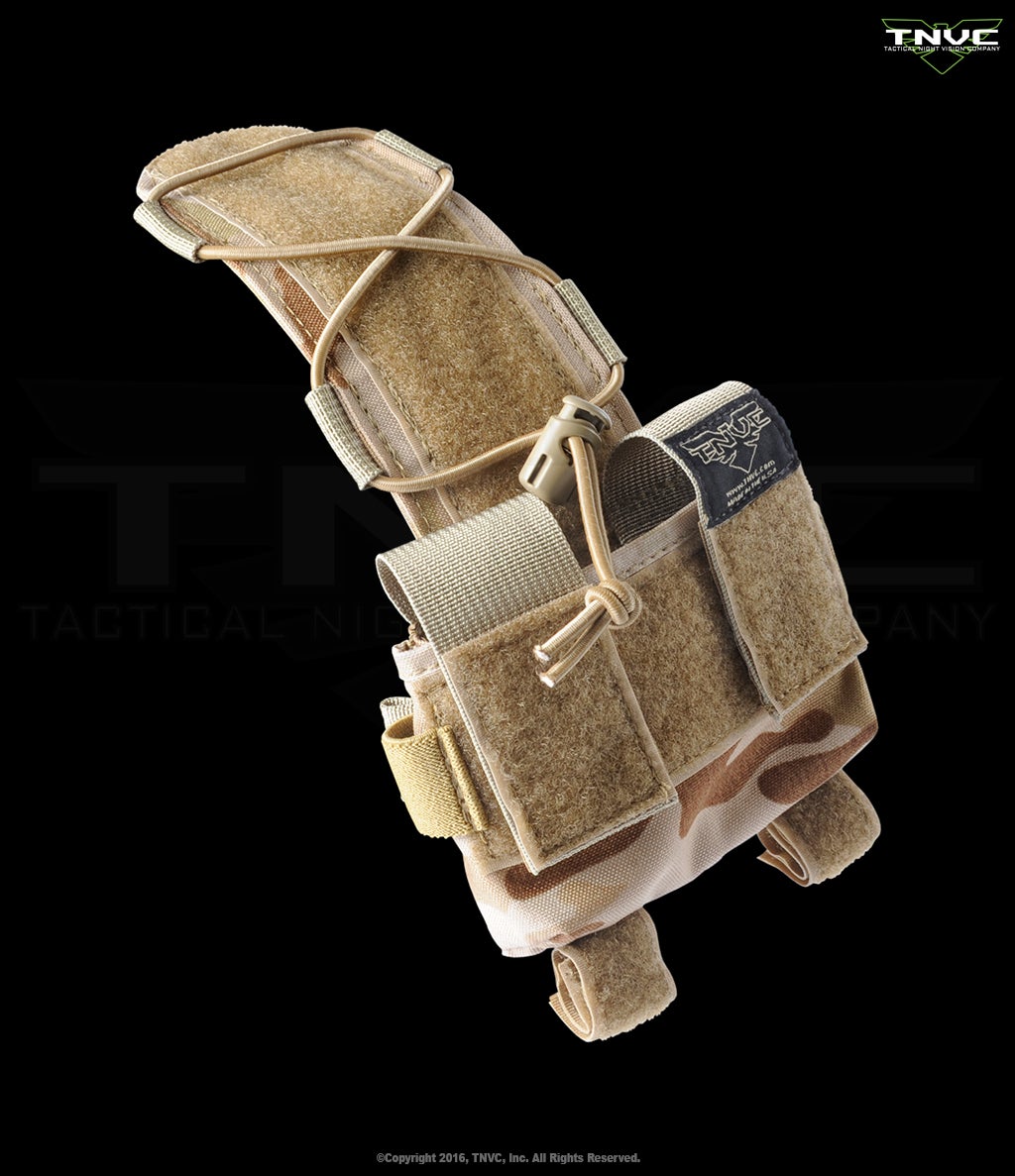
The Mk2 Mohawk was designed to fit battery packs for Sentinels, ANVIS9, AVS-6, AN/PVS-23, AN/PVS-31, and GPNVG-18.
Source: https://tnvc.com/shop/tnvc-mohawk-mk2-battery-box-counterweight/
The Mk3 is the latest version and was specifically designed for the PVS 31 battery pack.
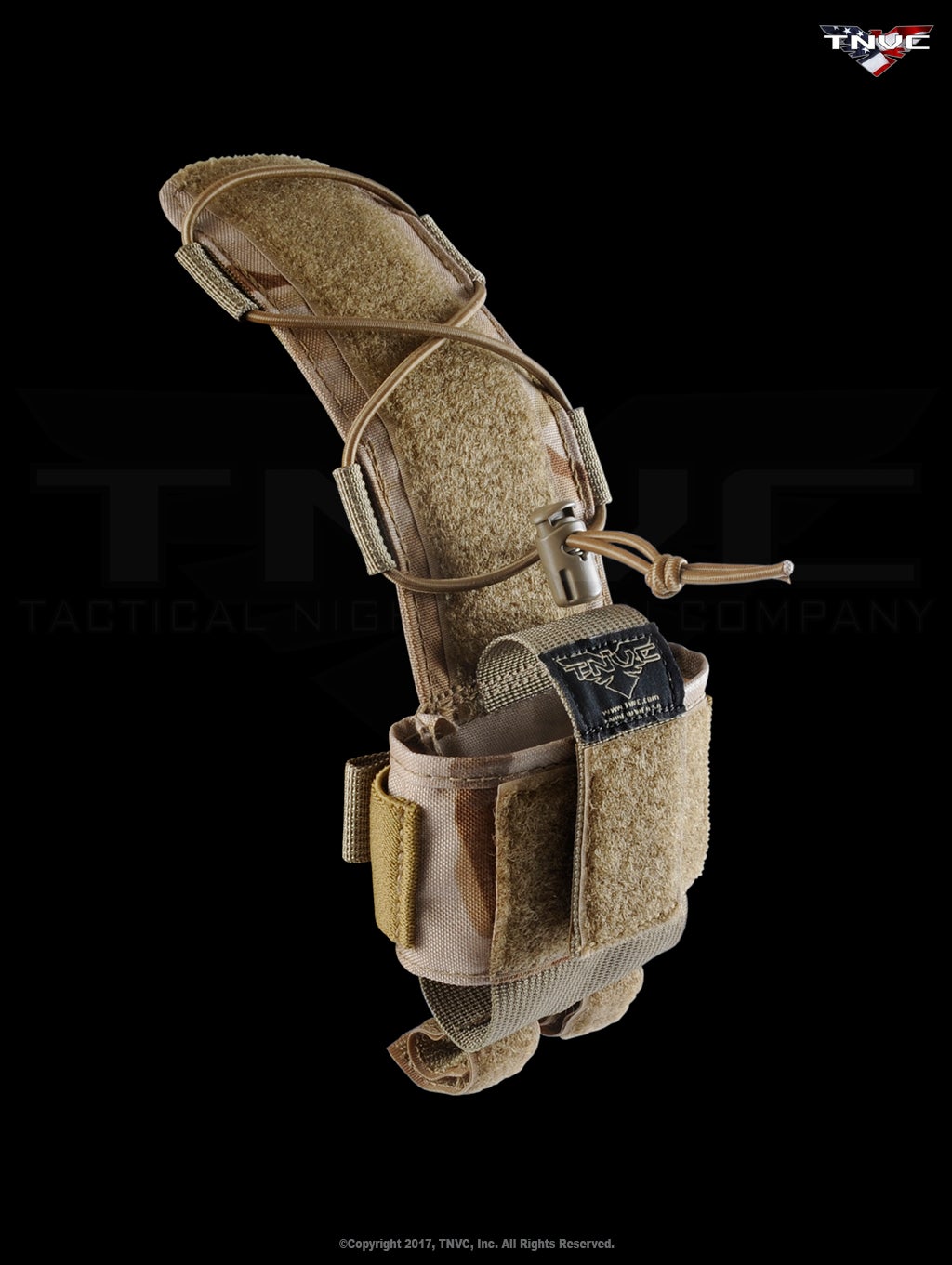
The Mk3 was specifically designed to fit the AN/PVS-31 battery pack.
Source: https://tnvc.com/shop/tnvc-mohawk-mk3-an-pvs-31-battery-box-counterweight/
It is smaller than the Mk2 and has openings to allow for the strobes on the battery pack to be visible.
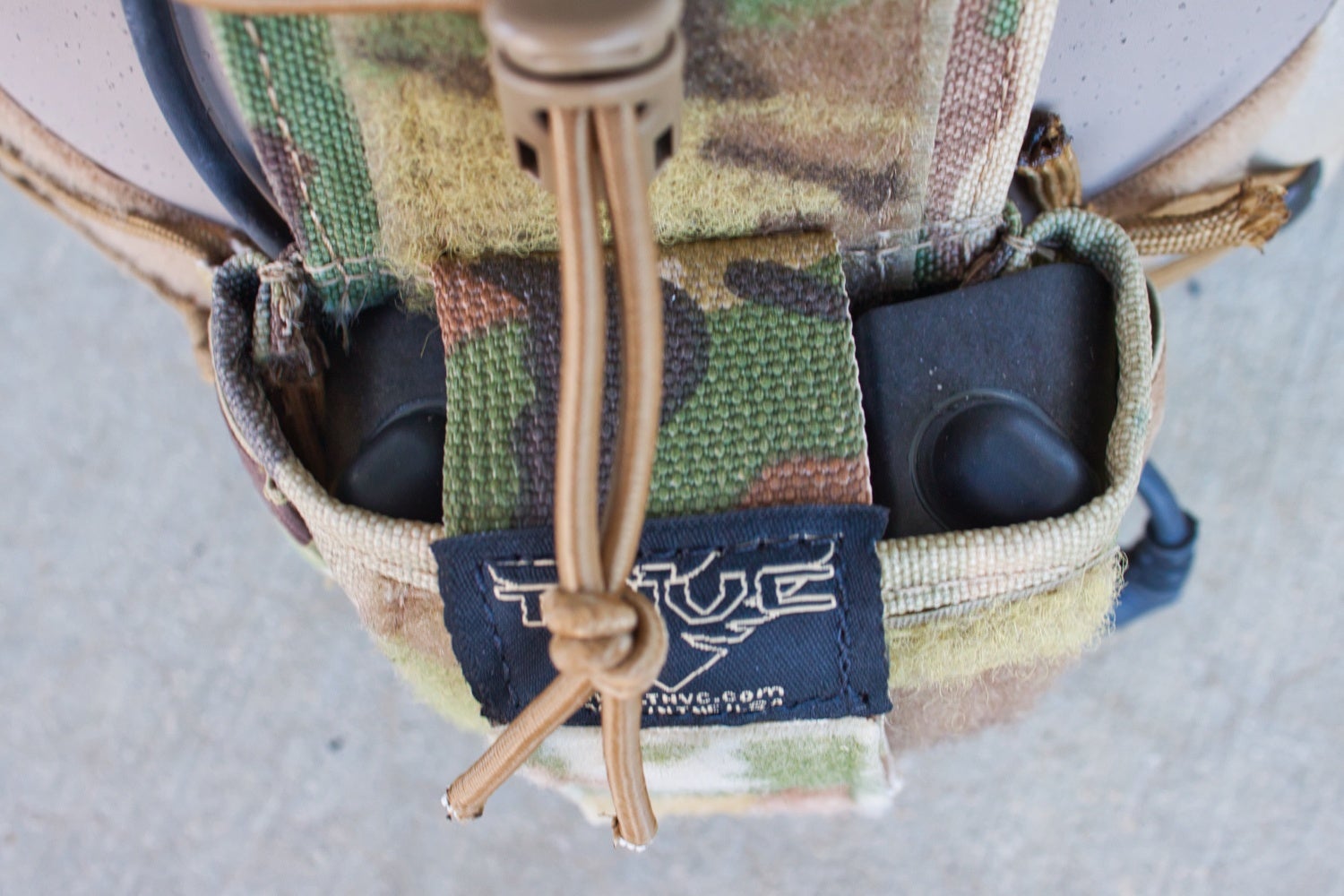
Notice how both of the strobes on the top of the battery pack are left visible.
It also has openings on the bottom to allow the user to turn on the batter pack or turn on the ir strobe feature.
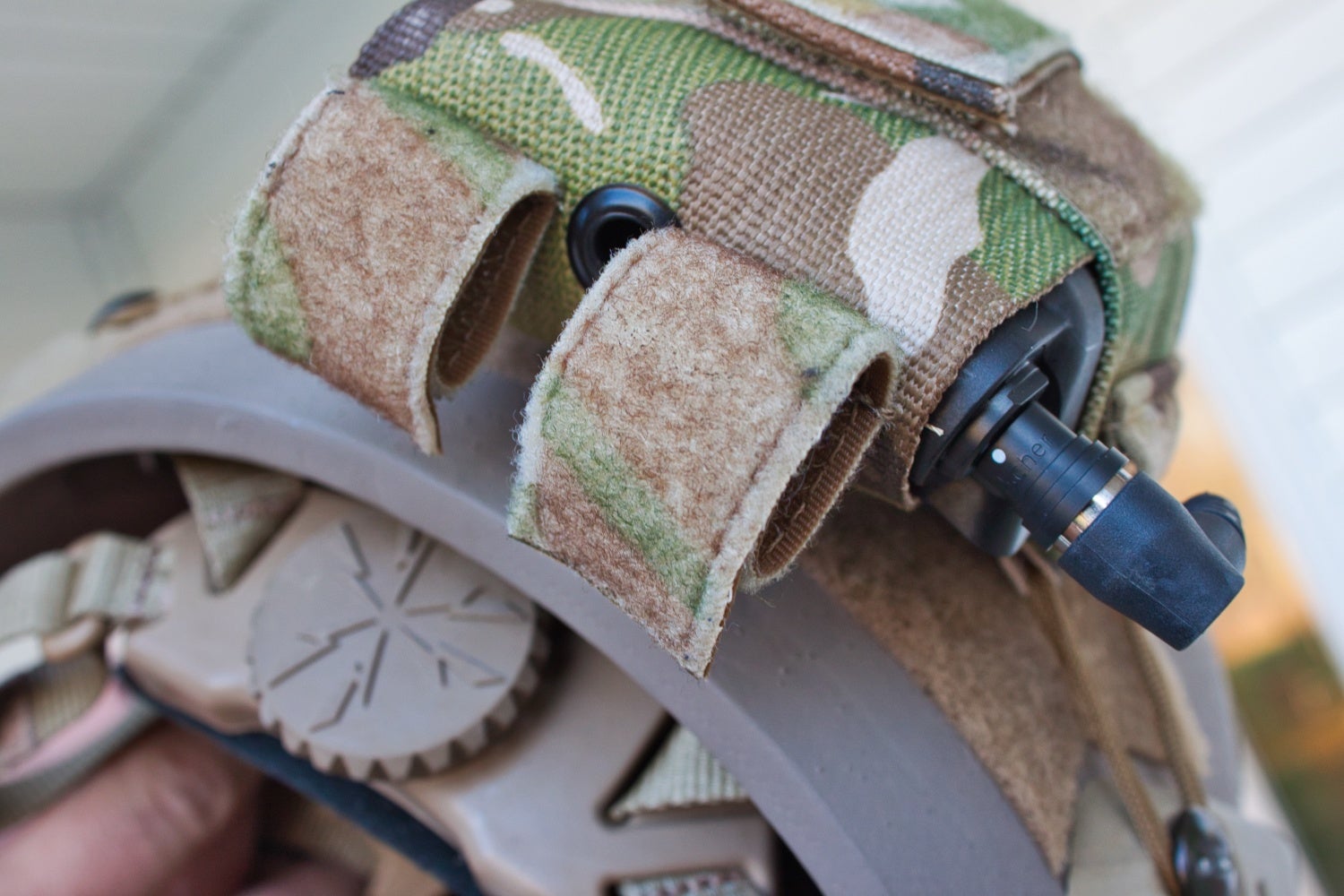
The opening on the right of the Mohawk allows for the cable to connect the battery pack to the PVS-31s.
I have been using a TNVC Mohawk Mk3 for a month and have been very impressed. The Mohawk has hook velcro along the inside of the helmet and has worked well with both a Revision and an Ops Core helmet based on their velcro loop locations.
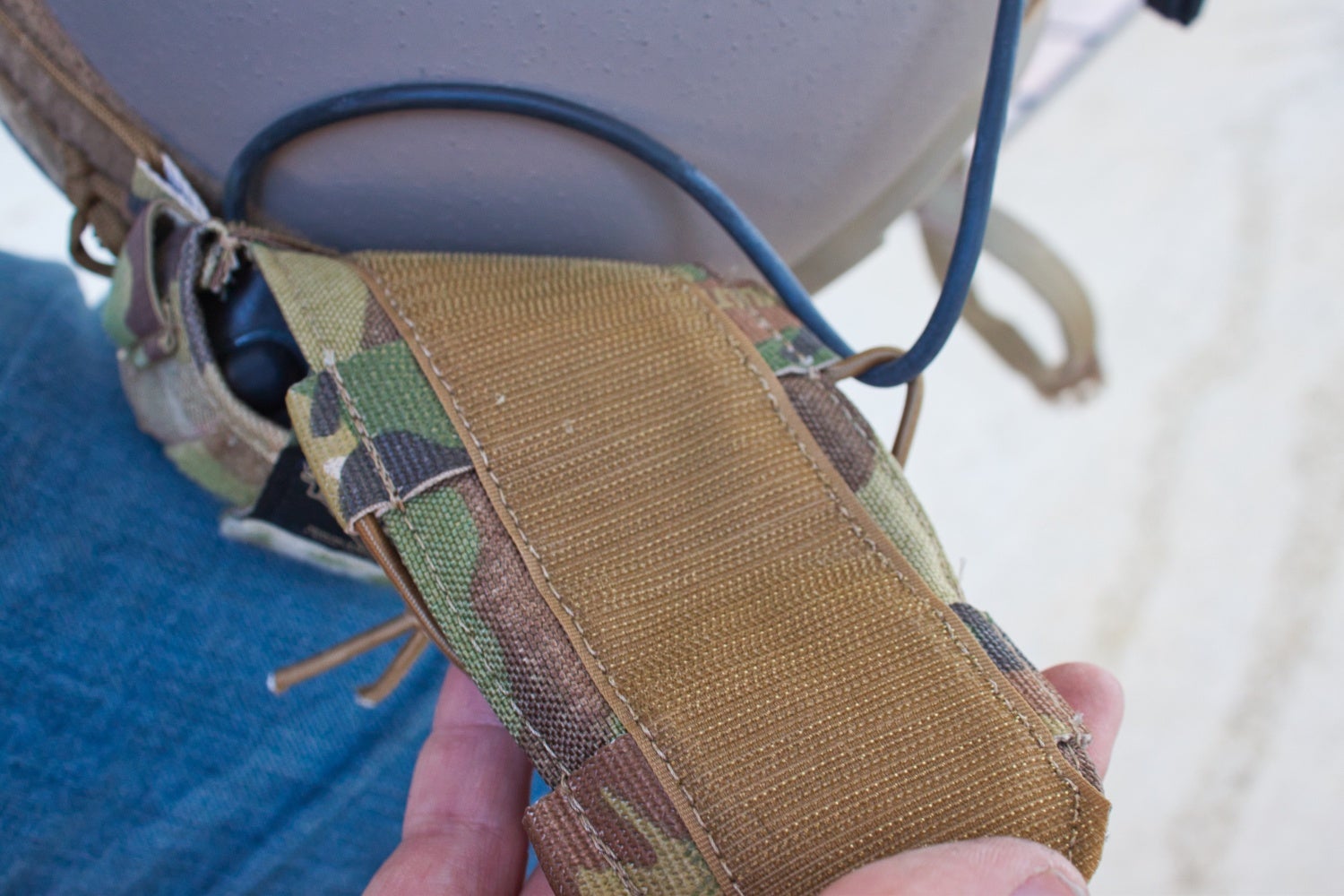
Despite transitioning between multiple helmets the hook velcro maintained positive retention.
On the opposite side of this velcro, all of the Mohawks utilize a bungie system. This can be used for IR/visible strobes for courses, SAR, or integration with aerial assets. Due to the expandable and retractable system nearly any of the common strobes will fit.

Pictured here is a CORE Survival HEL-STAR 6 Strobe retained by the bungie system.
For those not running a strobe, the bungie can also be used to retain a tourniquet accessible to either hand. The two velcro loops at the bottom of the Mohawk were designed to route coms cables. For those without coms cables these loops can be used to hold chem lights during courses or SAR efforts.
There are also two loops near the base of the Mohawk that allows the base to be secured to the screws in the rails on the helmets or to the rail itself. A tip I learned in a recent TNVC Night Fighter Armed Professional course was to gut the internals from 550 cord and use the gutted 550 cord to tie the base of the Mohawk to the screws in the arc rails.
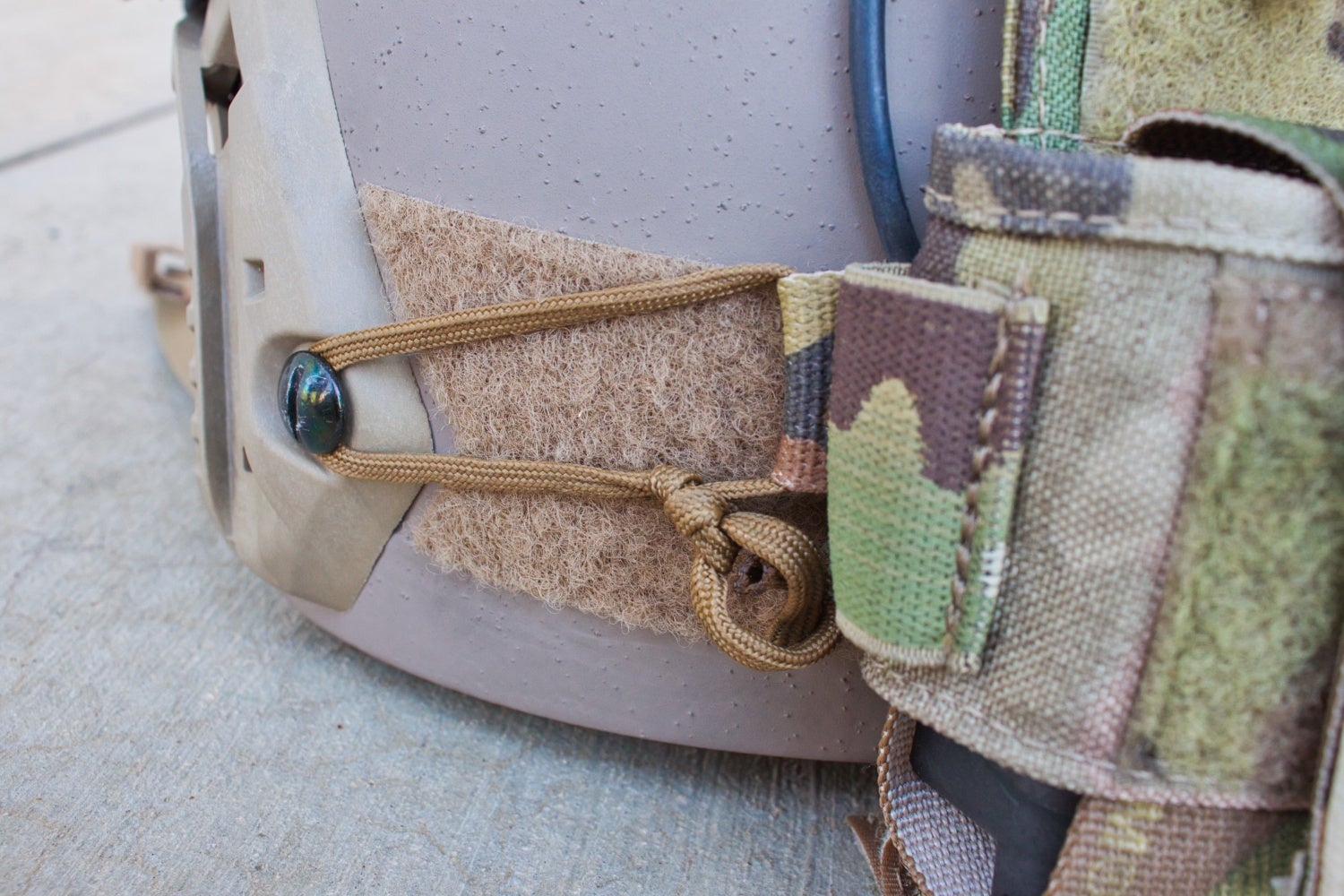
Due to the importance and price of battery packs, tying down the Mohawk with gutted 550 cord is advised.
The velcro does a good job of preventing the Mohawk from shifting positions on the helmet, but the 550 cord ensures the Mohawk is not lost during rigorous or dynamic movement.
Future Improvements
While I am greatly enjoying the benefits of the Mohawk, in the near future I will also be adding a Lid Snake by Spiritus Systems to complete my helmet setup. Lid Snakes are velcro attached nylon tubes that enable the user to simply run the cord through the Snake and then adhere the Snake directly to the surface further preventing any snag hazards.
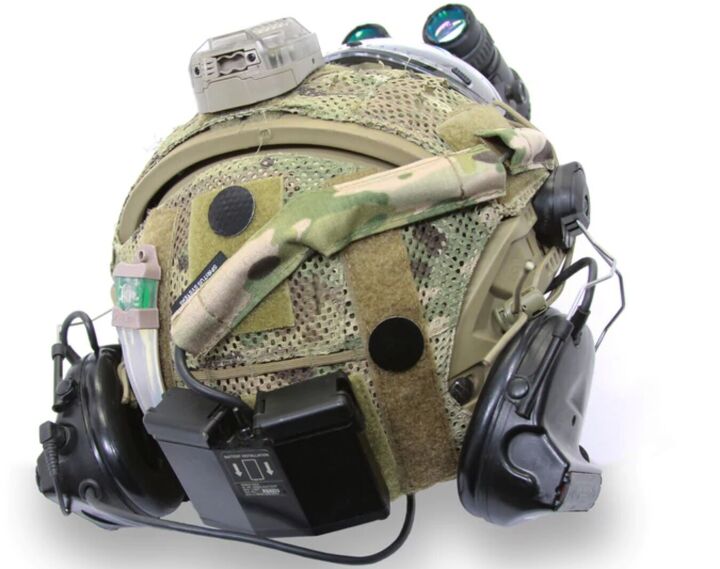
Even for those not engaging in dynamic movement the potential for snag hazards warrants the use of a Lid Snake.
Source: http://spiritussystems.com/lid-snake-mk-2/
For those using this gear in a professional role the need to ensure all gear is properly retained is obvious. However, retention is also very important for training junkies and hunters. With the high price of night vision accessories, the Mohawk if nothing else is a great insurance policy to prevent the loss of valuable gear. Mohawks run between $69.00 and $79.00. While moderately expensive, the organization and retention gained is well worth the investment. To see other counterweight options or purchase a Mohawk follow the link here.
 Your Privacy Choices
Your Privacy Choices
